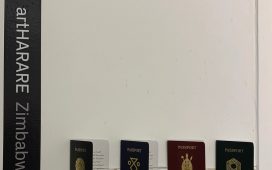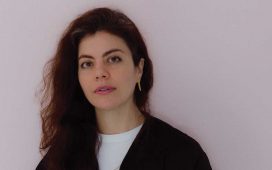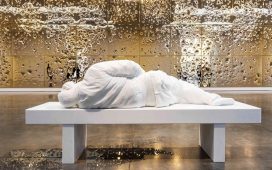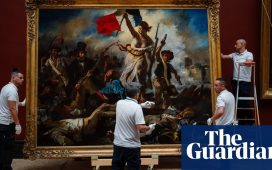Sceptics of Expo Chicago have had good reason to re-evaluate their opinions since last summer, when Frieze announced it was acquiring the Windy City-born fair without rebranding it or changing its senior leadership. Maybe, just maybe, an event with international scope, more than a decade of longevity and geographical centrality in the world’s largest national art market was onto something all along?
Although Expo Chicago’s 2024 edition (11-14 April) will be its first under Frieze’s ownership, the fair’s core attributes remain. This year’s iteration features around 170 exhibitors that together hail from 29 countries, ranging from South Korea’s One and J. Gallery and the international firm Perrotin to the hometown dealers Corbett vs. Dempsey and Rhona Hoffman Gallery. Also intact is the fair’s robust programme of Curatorial Initiatives and a founding belief that, as its long-time president and director Tony Karman tells The Art Newspaper, “The Greater Midwest is an important marketplace that deserves to be served.”
Still, one of the art trade’s favourite parlour games since the deal’s announcement has been to speculate about the nature and extent of the changes that new ownership would bring to Expo Chicago and The Armory Show, whose purchase by Frieze was announced concurrently with Expo’s. Both Simon Fox, Frieze’s chief executive, and Karman say to expect an evolution, not a revolution.
Both Expo Chicago and the Armory Show have their own identities, histories and cultures
“When we bought these fairs, it was not to ‘Frieze-ify’ them,” Fox says. “Both fairs have their own identities, histories and cultures. We want to improve them where we can, but we don’t want to turn them into Frieze.”
Although Karman anticipates that it will take until at least 2025 for some of the larger effects of the acquisition to blossom, he says that there is “no question one will see some impact” on this April’s iteration of Expo Chicago.
The most pronounced of the immediate-term changes will be a new floorplan “very much influenced by the way Frieze presents a fair”, Karman adds. For instance, some of Expo’s special sections—such as Exposure (for one- or two-artist presentations by galleries aged ten years or younger) and Profile (for solo stands from established international dealers)—will be shifted from more peripheral areas of Navy Pier’s Festival Hall into more central positions.
The goal is to create a more cohesive layout for an event whose exhibitor list and programme had already scaled up to the physical limits of its venue before this year. Put simply, Expo Chicago cannot host substantially more exhibitors unless it moves to a larger space, at least not without shaving off one or more of the components that make the fair what it is.

Global outlook: Expo Chicago has consistently attracted international galleries
Justin Barbin
Still, Karman sees this as a blessing rather than a curse. “The fixed nature of Navy Pier has been a real benefit to us,” he says. To paraphrase, the hall’s boundaries keep Expo Chicago in a kind of art-fair Goldilocks Zone: neither too small to entice major international sellers and buyers to participate, nor too large for its existing sections to lose their individual identities in a sensory-overloading sprawl.
Karman contends that Expo Chicago’s top priority is to maintain the overall quality of the presentation and “an international perspective” among the participating galleries. The data shows maintenance is indeed the operative concept, as the fair has consistently welcomed a healthy share of dealers from around the globe dating back to its earlier life as the Chicago International Art Exposition and Art Chicago, which ran from 1980 until 2011. In 1993, for example, around 27% of the 79 total exhibitors were international galleries; the same is true of around 30% of this year’s exhibitors, according to a fair spokesperson.
Growth for Expo Chicago comes from innovating and listening
None of which is to say that Expo’s leadership has grown complacent, particularly in light of the resources that dealers are expending to take part. “We have to be mindful of the costs associated with any gallery participating in our fair, and it’s in our best interest to innovate and create programming that makes the experience in Chicago additive,” Karman says.
“Growth for Expo Chicago comes not just from being part of the larger family of Frieze art fairs but also from innovating and listening,” he adds. “I’m grateful to the leadership of Frieze for allowing us to maintain our identity within this new family.”
- Expo Chicago, 11-14 April, Navy Pier, Chicago








